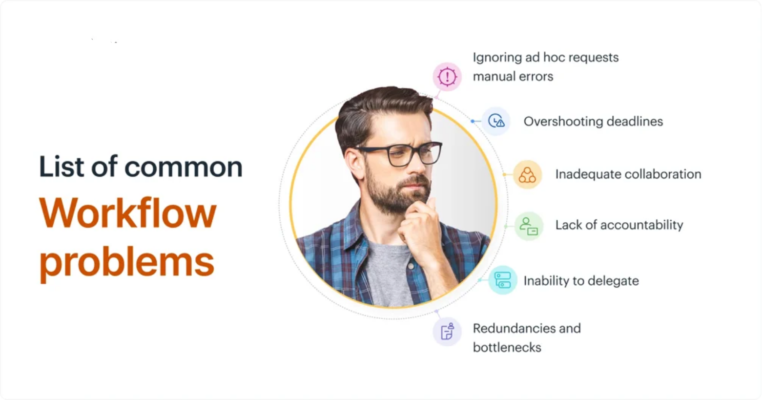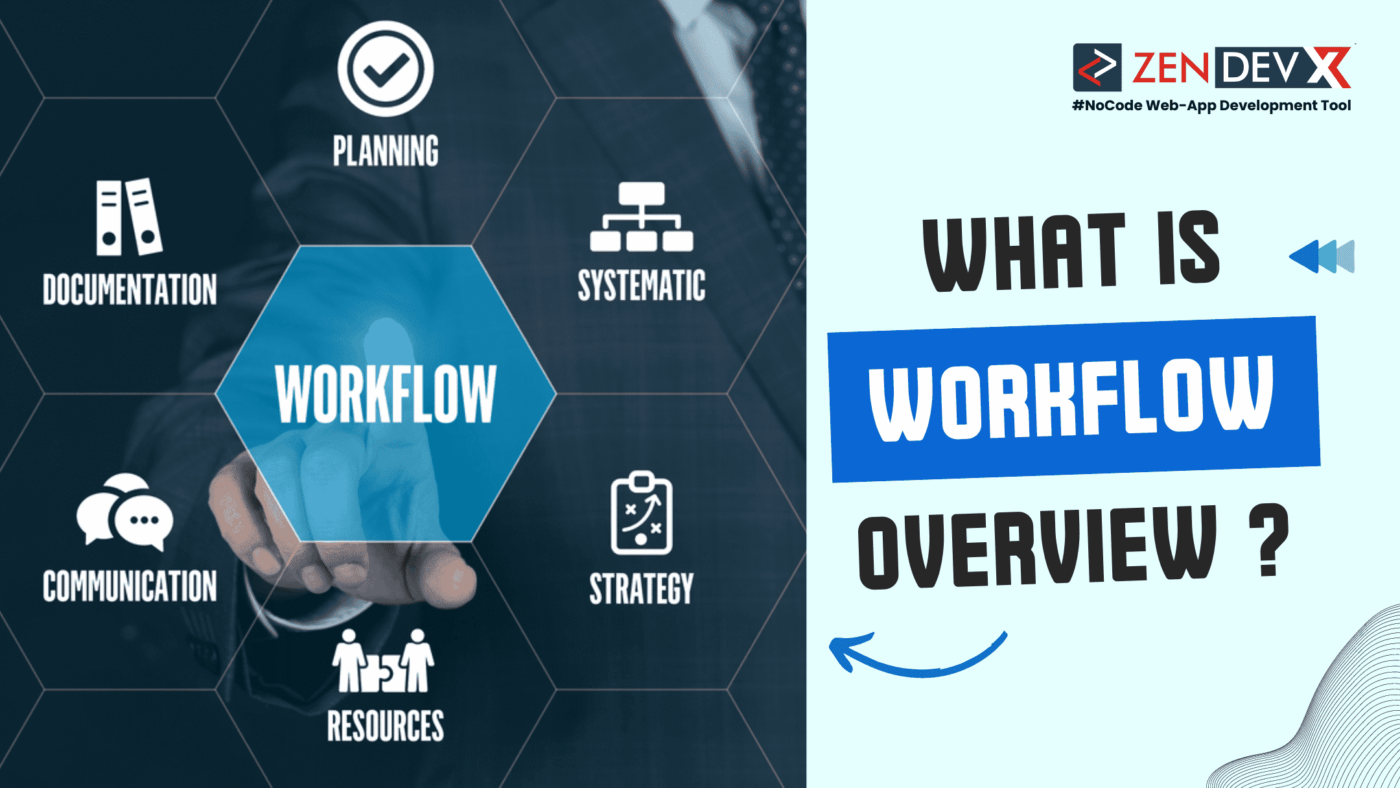Mastering Workflows: The Key to Efficient Task Management
In the tech-centric corporate environment of today, “workflow” is a fundamental idea that opens the path to effective task management and simplified processes. Mastery of workflows is more than just a talent for important participants in the technology and innovation sectors—business technology partners and CIOs—then it is a strategic need.
Professionals include operations managers improving corporate processes, project managers organizing difficult jobs, and IT managers managing process automation also find themselves caught in the complex web of workflows searching for efficiency.
Let’s explore the core of processes, look at their several forms, and clarify their useful uses by means of real-world scenarios. This guide offers you the tools and information required to properly apply processes, match technology with corporate objectives, and eventually lead your company toward operational excellence in the digital age.
Definition of Workflow & Meaning :
A workflow is a group of tasks carried out from commencement to completion along a designated path using a set of data. Workflows are the road map showing how anything moves from raw to processed, or undone to done.
Whatever the sector, they can be applied to organize any form of commercial operation. Basically, a process results whenever data is transmitted between people and/or systems.
Approaches to Workflow :
Workflows run all across the office. While some are highly regimented and others are not, processes exist anywhere data flows from one job to another.
Let us closely examine every workflow.
Flow of Process Work :
When the set of jobs is predictable and repetitious, a process workflow results. This implies that you already know exactly the course an item should follow before it starts the process.
Business process systems are designed to manage an unbounded quantity of goods passing through them. One instance would be the process of purchase requisition approval. Starting it sets the workflow with few deviations, so you may handle any quantity of things in one single workflow.
Case Study Flow :
Under a case workflow, you are unsure of the course of action needed to finish the item from the outset. As more data is acquired, the road opens out. Good instances are support tickets and insurance claims. The way these objects will be handled is not obvious from the beginning; only with some research will the road show itself.
Though they depend on a human or an intelligent bot to determine the correct course, case workflows can manage any number of objects, much like process workflows.
Project Workflow :
Though there may be greater freedom along the road, projects follow a set course like those of procedures. Consider publishing a fresh update of your website. The order of activities needed to finish the project is rather well predicted by you.
Still, project flow is limited to one item. Another website launch might not happen for some time and most likely follow exactly the same route.
Although most tools you will come across online only address processes in the sense of process workflow, the other two are as crucial to take into account since much of the office activity falls into those two areas.
Workflows: Categories
There are four categories to workflows:
Order of Operations :
The kind of process whereby the fulfillment of one task determines the next ones. For instance, you have to wait till your boss approves it and subsequently the finance department when you have requested for a leave. It wouldn’t reach the finance until your management approved it. Usually following the same flow chart style, this type of workflow guarantees that everyone in the sequence is moving forward and helps to avoid backlogs.
Concurrent Processes :
The kind of workflow whereby several jobs can be completed in unison. When the HR department is onboarding a new employee, for instance, they can concurrently ask the IT team for hardware and software assets as well as additional documentation, signatures, and contracts from the finance and legal teams. These processes occasionally also rely on one another.
Simple projects where you can split the major effort into independent sub-tasks find parallel processes ideal. Furthermore, in case of delay resulting from any sub-task, it wouldn’t affect the other chores.
State Machine Procedures :
Working this kind of system moves you from one state to another. Given their occasional backtracking, state machine workflows are somewhat complicated. Usually, a project needing several customer or management assessments and reviews calls for this kind of workflow.
Workflow Guided by Rules :
Rules-driven workflows are built on sequential processes using rules that advance us. When working on several projects with distinct goals and varying requirements, they are quite helpful.
What Could Be My Workflow Issues?
A workflow is a set of actions meant to follow a clear path. Although systemically this could seem simple, one could run over many workflow challenges.

Common workflow issues include some like these:
- Inability of responsibility
- Inadequate cooperation
- Inability to assign
- Overshooting dates
- Redundancies and obstacles
- Not considering ad hoc needs
- Hand mistakes
How Can I See Workflows Around Me?
Workflows abound in many different settings. If you have a lot of emails you mechanically pass down an unseen chain, that is workflow. Printing the same form repeatedly over and again creates a workflow.
You have a workflow if you find yourself using a spreadsheet to arrange dynamic data. That’s a workflow if you discover your work is delayed because someone else isn’t performing their job well.
Well-known examples of efficient processes are:
- Employee offboarding calls for IT services.
- Customer Service Desk
- Purchase orders demand
- Demand for reimbursements
- Close examination of the staff onboarding process
Is a Workflow the Same as a Process?
Not yet. Workflows just outline the order of operations. A process is a more general phrase used to describe the data, forms, reports, alerts needed to move an item from beginning to end in a controlled environment.
The purchase order process, for instance, might go Initiator => Manager Approval => Procurement Processing. But the process also entails a data set of approved vendors to select from, the individual sequential number allocated to the purchase order, how procurement is informed, the budget available, and many more elements.
Are Checklists and Processes the Same Thing ?
Not at all. An ordinary form of a workflow is a checklist. Checklists are useful for procedures and projects alone; they usually lack the capacity to be shared across team members. Checklists can make tracking objects that must be returned to an earlier level in a workflow challenging.
Checklists are not very good at handling conditional on specific data-based processes. For instance, you would have as many checklists as you have platforms if you are creating marketing campaigns but wish to follow a distinct workflow depending on what platform will be utilized to disseminate the campaign. With more advanced workflow, on the other hand, you can manage all the items in one run.
Before selecting a workflow tool that resembles an automated checklist, be cautious since it will soon show limits on how it can manage your data.
Human-Centric vs System-Centric Approaches
Most of the chores in human-centric processes fall to humans. These could call for data approval, original creation, or double-checking material.
Most of the chores in system-centric processes are completed by a machine and call for either minimal or no human participation. To produce a financial report, for instance, a workflow may be sent off simultaneously every month to gather specific data from several systems, process it into a report, and email the report to every relevant party. One system can handle all of these chores.
Document-Centered Workflow
Additionally, there are document-centric processes whereby the whole process is centered on a document. One such nice example would be a lease for some office space.
Every action taken during the process must be recorded on the document and the final product should be a contract accurately capturing all the data in the workflow together including digital signatures.
Automated vs Manual Methodology
Manual work calls for human involvement; this usually entails moving every item from one project to another. By contrast, an automated process uses technology to route predictable requests automatically along a specified path.
A human handles pushing every item from one task to another in a manual workflow. For instance, an employee must send a reimbursement claim she files to her management for clearance. She has to email it to the finance department following approval.
The finance department has to enter into the program a payment and then email the staff to indicate it is finalized.
When a human finishes a task in an automated workflow, she is not in charge of forwarding the data on to the following one. Programmed to manage this is the process. The system controls reminders, deadlines, and notifications among other chores.
Under the identical reimbursement scenario, the staff member might complete a form and click a submit button. It would immediately set off a management alert to check it and click Approved.
Automated systems make tracking objects considerably simpler. Either manually updating a spreadsheet or sending dozens of emails and messages to find the state of objects in a manual procedure. Automated processes will show you straight where the item is in the system.
83% of IT managers think digital transformation requires workflow automation. Currently, 48% of companies are using automation tools to replace manual labor.
Advantages of Systems of Operations
“In the digital age, automation is a great tool that might transform processes and release output. Using automation can help companies reach better accuracy, scalability, and efficiency, so lowering costs, improving decision-making, and raising customer happiness.” – Vivek Goel from NASSCOM
Among the several advantages of workflow automation systems are:
- Reducing unnecessary work
- Raising effectiveness
- Task delegation simplified
- Cutting processing time
- Providing more attention
- Establishing responsibility
How Can I Design and Control Automated Workflows?
Although numerous solutions are available to digitize your processes, you truly want to locate one that can be automated as much as possible to assist in better management of your workflow.
Workflow management tools will help you to automatically handle your tasks. With the help of the workflow management tool, you will be able to visually depict the workflow including all conditional activities and exceptions. The best workflow tools will enable you to produce a strong form that serves as a carrier for all the information needed to handle the item properly.
Subsequently, the program will handle automatically running the processes on its own. A user should be able to complete an initial form, and the program handles moving the item from one task to another until it is finished.
Most workflow management systems are designed exclusively for process workflows—that is, those predictable and repetitious ones. To handle case workflows and project workflows from the same platform instead of depending on various tools for every one of these circumstances, you should thus aim to identify a solution that can also allow you handle these aspects.
Serious about workflow management companies typically have a central workflow management tool available to every department to design their own processes.


